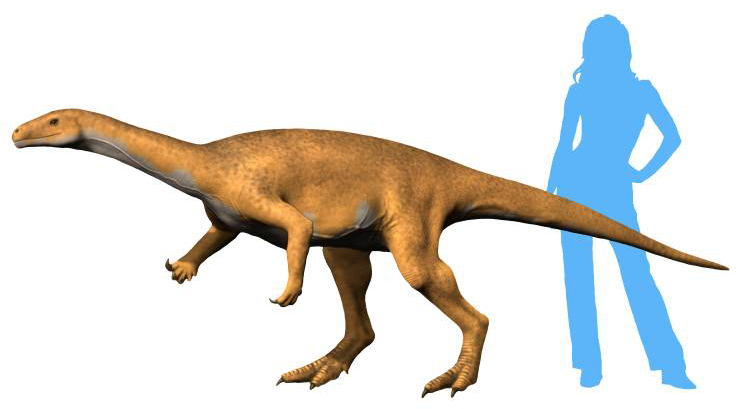Bagualosaurus on:
[Wikipedia]
[Google]
[Amazon]
''Bagualosaurus'' is a genus of sauropodomorph
 In 2007, in a ravine at the outcrop of Janner, near Agudo in
In 2007, in a ravine at the outcrop of Janner, near Agudo in
dinosaur
Dinosaurs are a diverse group of reptiles of the clade Dinosauria. They first appeared during the Triassic period, between 243 and 233.23 million years ago (mya), although the exact origin and timing of the evolution of dinosaurs is t ...
from the Candelária Sequence (Uppermost Santa Maria Formation) of Brazil
Brazil ( pt, Brasil; ), officially the Federative Republic of Brazil (Portuguese: ), is the largest country in both South America and Latin America. At and with over 217 million people, Brazil is the world's fifth-largest country by area ...
, dating to around 230 million years ago in the Carnian of the Late Triassic
The Triassic ( ) is a geologic period and system which spans 50.6 million years from the end of the Permian Period 251.902 million years ago ( Mya), to the beginning of the Jurassic Period 201.36 Mya. The Triassic is the first and shortest period ...
. It includes one species, ''Bagualosaurus agudoensis''.
Discovery
 In 2007, in a ravine at the outcrop of Janner, near Agudo in
In 2007, in a ravine at the outcrop of Janner, near Agudo in Rio Grande do Sul
Rio Grande do Sul (, , ; "Great River of the South") is a Federative units of Brazil, state in the South Region, Brazil, southern region of Brazil. It is the Federative_units_of_Brazil#List, fifth-most-populous state and the List of Brazilian st ...
, a sauropodomorph skeleton was excavated. It was removed in a single block of stone. For five years it remained unprepared in the collection of the ''Laboratório de Paleovertebrados da Universidade Federal do Rio Grande do Sul'', curated by Cesar Leandro Schultz. In 2012, Flávio Augusto Pretto began to study the specimen. In 2018, Pretto, Max Cardoso Langer and Schultz named and described the type species
In zoological nomenclature, a type species (''species typica'') is the species name with which the name of a genus or subgenus is considered to be permanently taxonomically associated, i.e., the species that contains the biological type specimen ...
''Bagualosaurus agudoensis''. The generic name is derived from ''bagual'', "strongly built fellow" in the dialect of Rio Grande do Sul, in reference to the strong hindlimbs. The specific name Specific name may refer to:
* in Database management systems, a system-assigned name that is unique within a particular database
In taxonomy, either of these two meanings, each with its own set of rules:
* Specific name (botany), the two-part (bino ...
refers to the provenance from Agudo.
The holotype
A holotype is a single physical example (or illustration) of an organism, known to have been used when the species (or lower-ranked taxon) was formally described. It is either the single such physical example (or illustration) or one of several ...
, UFRGS-PV-1099-T, has been found in a layer of red mudstone of the Candelária sequence dating from the latest Carnian. It consists of a partial skeleton with skull. It contains the lower parts of the skull, the lower jaws, nine trunk vertebrae, three sacral vertebrae, two tail vertebrae, ribs, gastralia, chevrons, both ilia, the right pubis, both femora, both tibiae, both fibulae, and most of the left foot. The skeleton was partly articulated but has been damaged by erosion. It was found on its back with the hindlimbs pulled up, a rare position for archosaurian fossils.
Description
''Bagualosaurus'' was a modest-sized basal sauropodomorph, measuring approximately in length that, based on its teeth, was mostlyherbivore
A herbivore is an animal anatomically and physiologically adapted to eating plant material, for example foliage or marine algae, for the main component of its diet. As a result of their plant diet, herbivorous animals typically have mouthpart ...
. Features of its skull and dental structure are similar to '' Pampadromaeus'', which comes from the same beds, and later Norian
The Norian is a division of the Triassic Period. It has the rank of an age (geochronology) or stage (chronostratigraphy). It lasted from ~227 to million years ago. It was preceded by the Carnian and succeeded by the Rhaetian.
Stratigraphic defi ...
sauropodomorphs such as ''Pantydraco
''Pantydraco'' (where "panty-" is short for Pant-y-ffynnon, signifying ''hollow of the spring/well'' in Welsh, referring to the quarry at Bonvilston in South Wales where it was found) was a genus of basal sauropodomorph dinosaur from the Late Tri ...
'', '' Efraasia'' and '' Plateosaurus''. However, its post-cranial skeleton resembles earlier forms. Likewise, it is somewhat smaller than Norian sauropodomorphs, yet significantly larger (~45% based on femoral length) than other sauropodomorphs of the Carnian epoch, suggesting that it is transitional between the sauropodomorphs of its time and their later Norian descendants.
See also
*2018 in paleontology
Flora Plants
Fungi
Cnidarians
Research
* New three dimensionally phosphatized microfossils of coronate scyphozoan '' Qinscyphus necopinus'', including a new type of fossil embryo, are described from the Cambrian (Fortunian) Kuanchuanpu F ...
References
{{Taxonbar, from=Q54315693 Sauropodomorphs Carnian genera Late Triassic reptiles of South America Triassic Brazil Fossils of Brazil Santa Maria Formation Fossil taxa described in 2018